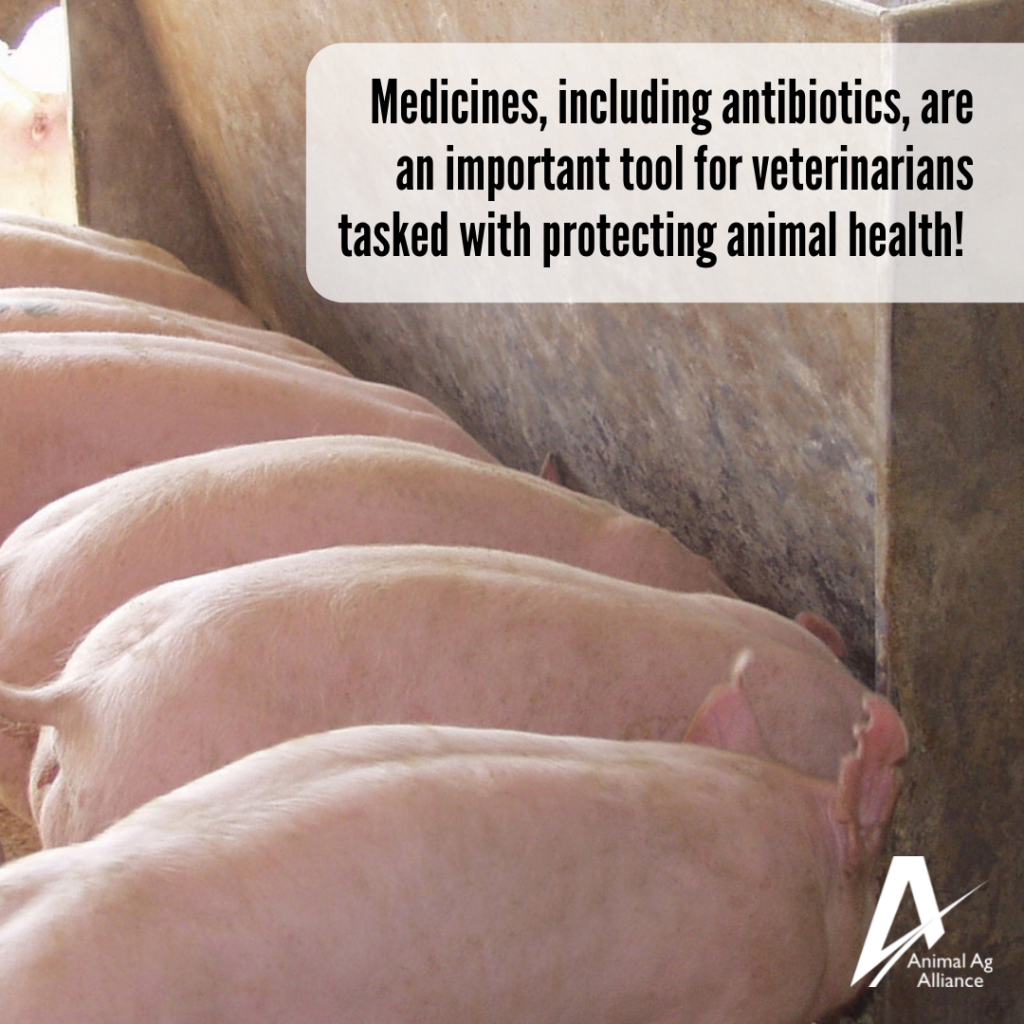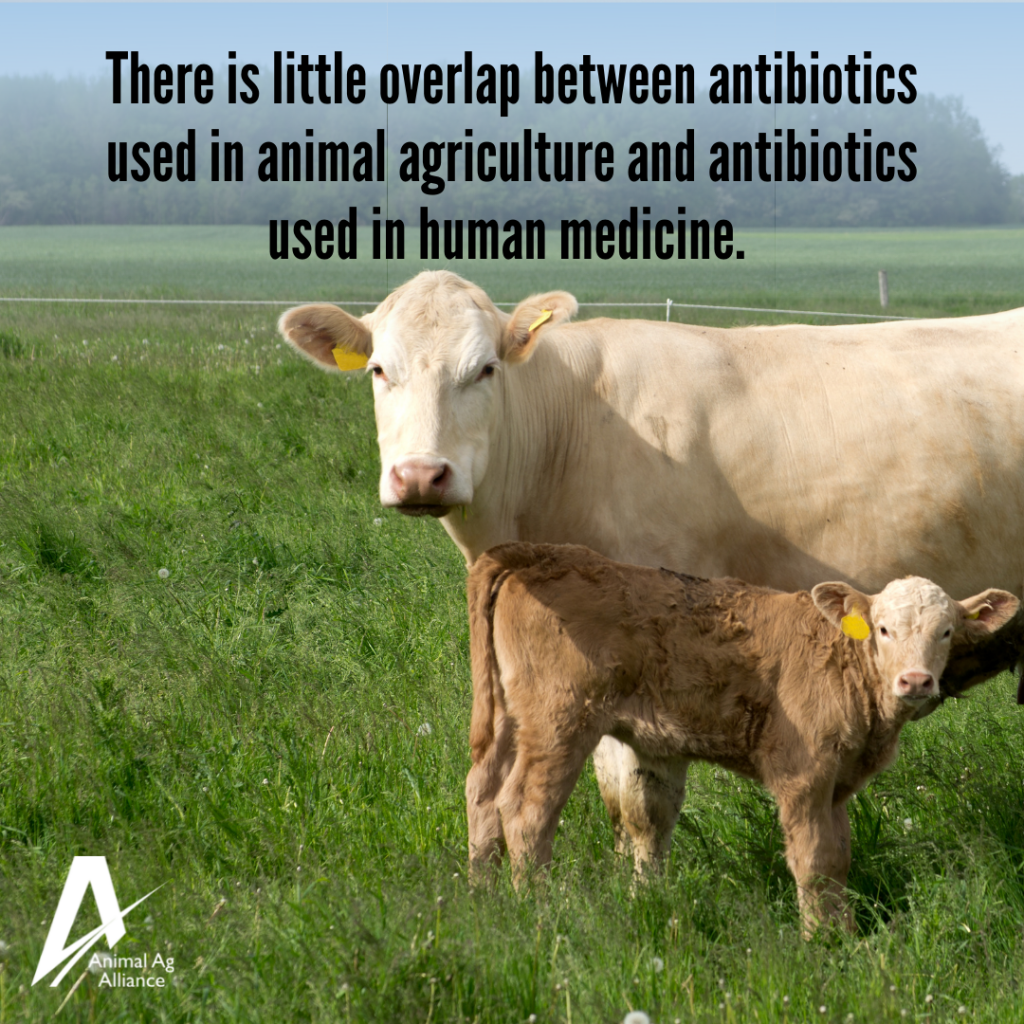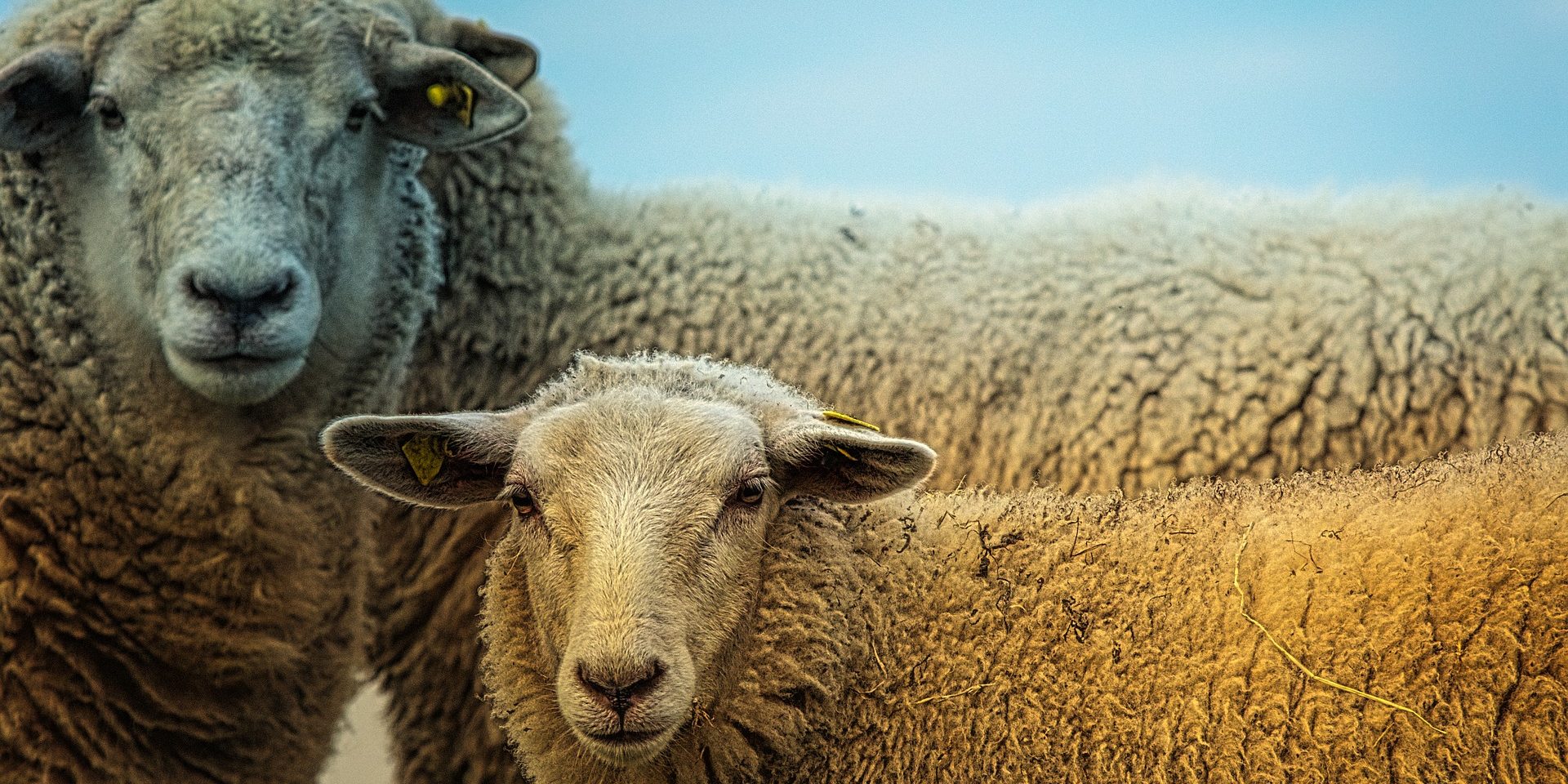I think that everyone probably thinks they have the best mom in the world, but I definitely do. My mom is a woman of many interests: art, music, cold-brewed coffee and football, just to name a few. Like most moms in America, she has always taken a particular interest in the food that her kids eat. When my mom was helping me move into my temporary place for the semester, she took me to the grocery store and made sure that I had healthy options easily available. Recently, she’s been encouraging me to really take notice of what is in the food I eat – and to always read the label.

Like I mentioned in my last blog post, I did not grow up on a farm. Before interning with the Animal Agriculture Alliance, I would consider myself a typical consumer. As a consumer, when I see labels like “Raised without Antibiotics” on a package of chicken in the grocery store, it seems natural for me to assume that the chicken without that label may contain antibiotic residues that could be harmful to me and the people with which I share my food. Throughout my time with the Alliance, though, I have learned a lot about antibiotics and their role in animal agriculture.
Precautions by the FDA and USDA
Consumers are concerned about the possibility of antibiotic residues in their meat, and it’s easy to understand why. The worry is that if humans consume antibiotic residues through the meat they eat, they may build a resistance to those antibiotics. Then next time they got sick, it would prevent the antibiotics they needed from properly treating the illness. This is a real concern, but luckily the FDA and the USDA have been working diligently to prevent antibiotic residues from ever entering the market. After an animal has been treated with antibiotics, the FDA mandates that producers must wait for the drug to completely leave the animal’s system before processing them. The USDA’s Food Safety and Inspection Service then tests meat, poultry, milk, and eggs for trace amounts of any drugs present in products before they ever reach the market. It’s also important to note that there is very little overlap between antibiotics that are used in humans and antibiotics that are used in animal agriculture. Meat Mythcrushers has a great article about antibiotic overlap.

Antibiotics for growth promotion are being phased out.
One thing that even I can admit to thinking as a consumer is, “Sure, sick animals need treated. I get that. But I’ve heard that animal farmers will give antibiotics to their animals just to bulk them up, and that seems dangerous and irresponsible to me.” Well, rest assured! In 2013, the FDA requested meat producers to phase out antibiotics for growth promotion by 2016 – and the industry supported the FDA’s decision.
Even animals that are given the best care possible could still get sick and need antibiotics.
Another claim that I’ve heard is that if farmers were taking proper care of their animals, they wouldn’t even need antibiotics in the first place. I wish that were true, but unfortunately animals just get sick sometimes even if they have received the best care possible, which farmers work hard to provide. The North American Meat Association has a resource that really helped me understand this better. We take care of ourselves, but we still get sick and require antibiotics from time to time. Our pets do, too – and I know that many of us treat our pets as members of the family. The use of antibiotics in animal agriculture isn’t a sign of mistreatment; it’s actually a sign that farmers are paying attention to their animals’ well-being and giving them the medicine that they need to get better.

That said, there are farmers and food companies who have committed to raising animals without the use of any antibiotics. You may have heard “no antibiotics ever” or “raised without antibiotics” as ways to describe this production method. These farmers are just as committed to ensuring animal health. They will avoid the use of antibiotics as much as possible, but as I mentioned above sometimes animals will need treatment. If an animal requires an antibiotic to get better, it will receive the treatment it needs, and then be separated from the “no antibiotics ever” herd or flock and marketed through a different channel. Having different options helps farmers choose what works best for them, their animals and their farms, and benefits the consumer by offering a choice in the grocery store.
Ask questions – and find answers.
To be totally honest, I’m not sure that if I hadn’t accepted my internship with the Animal Agriculture Alliance I would have ever researched or looked into the concerns that I had heard about the use of antibiotics in animal agriculture. It was very easy to accept the things that were buzzing around without a second thought. So, some advice from a fellow consumer: do your own research and make up your own mind before accepting what you’ve heard online or through word of mouth as truth. And to all the moms out there (including mine), antibiotics in meat are one thing that you can take off of your plate!
All posts are the opinion of the author and do not necessarily represent the view of the Animal Ag Alliance.







